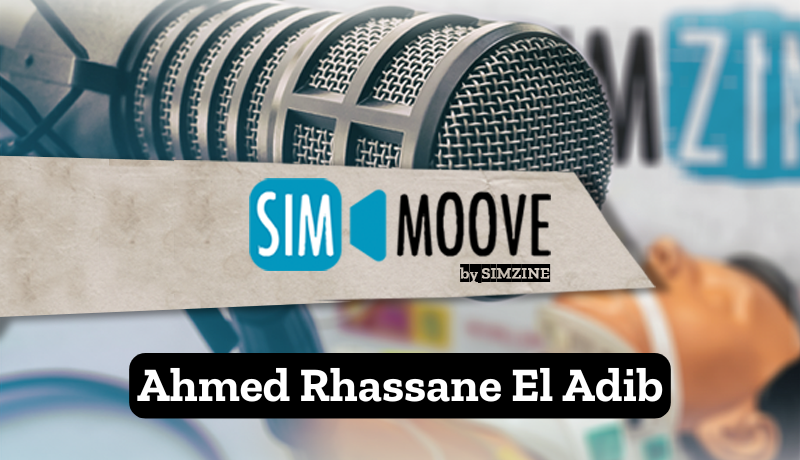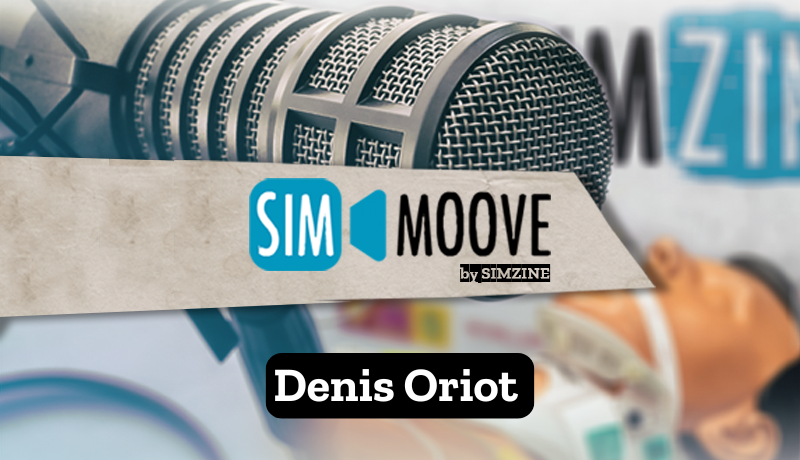In this episode of SIM Moove, the first French-language podcast dedicated to healthcare simulation, the host Fouad welcomed Ahmed Rhassane El Adib, a key figure in Morocco’s healthcare simulation landscape. Recorded during the final day of the Morocco SIM conference, this episode offers insights not only into the professional journey of El Adib but also into the ongoing evolution of simulation in healthcare in the francophone world.
A SIMZINE exclusive based on SIM Moove podcast interview with Ahmed Rhassane El Adib
In this episode of SIM Moove, the host Fouad Marhar sits down with Dr. Ahmed Rhassane El Adib, a prominent figure in Morocco’s simulation landscape. Their conversation reveals how a chance encounter with American simulation practices sparked a transformation in medical education across Morocco.
Morocco SIM: The Birth of a Healthcare Simulation Society
El Adib begins the conversation by recounting his early involvement in the Morocco SIM society, a group he co-founded alongside his colleagues with the shared goal of advancing healthcare simulation in Morocco. Over the years, El Adib has worn many hats: he served as vice president of Morocco SIM, and he now holds the position of national coordinator for the institutionalization of healthcare simulation. He is also the current president of the Moroccan Society of Emergency Medicine, having previously presided over the Moroccan Society of Anesthesia and Intensive Care. His deep commitment to emergency medicine and anesthesia led him to simulation early in his career, making him a pioneer in this domain in Morocco.
“I was drawn to simulation over 20 years ago,” said El Adib, “and I’ve developed several projects since, notably the Simulation Center in Marrakech, where I serve as the educational director.”
This passion for simulation, coupled with a steadfast commitment to improving healthcare education, has helped shape the Morocco SIM society into what it is today—a multidisciplinary, cross-professional group that has garnered national and international recognition.
A Journey Shaped by Mentors and Experiences
Every expert in simulation has a unique story of how they first entered the field. For El Adib, his entry into simulation came early in his medical residency, thanks to an encounter with the American Heart Association (AHA). “I was trained in Basic Life Support (BLS) and Advanced Cardiovascular Life Support (ACLS) through a course organized in Casablanca,” he recounted. “My proficiency in English allowed me to excel in the exams, and I was eventually selected to become an instructor.”
This opportunity took El Adib to the Philippines, where he participated in a week-long intensive course alongside other potential instructors from around the world. The course combined simulation-based pedagogy, interactive feedback, and debriefing techniques, sparking what El Adib called “a realization of the power of simulation.” This experience laid the groundwork for his lifelong dedication to advancing medical education through simulation.
El Adib highlighted the pivotal role that international experiences played in shaping his approach to simulation, which helped him recognize the potential of simulation as a transformative educational tool, adaptable to different environments and budgets.
However, the real turning point came during a visit to Washington Hospital’s simulation center. While others were captivated by the high-fidelity manikins, El Adib found himself drawn to a different aspect of simulation. “I discovered a corridor with more than ten consulting rooms equipped with one-way glass,” he recalls. These rooms were dedicated to practicing patient communication, breaking bad news, and conducting standardized patient interviews. This discovery would become the catalyst for his life’s mission back in Morocco.
Building from the Ground Up
Upon returning to Morocco, El Adib crafted a comprehensive project for his faculty. His timing proved fortuitous – coinciding with his return was a pedagogical congress featuring simulation experts, including Prof. Jean Fournier from Nice. This convergence of events led to an opportunity to establish a CESU (Centre d’Enseignement des Soins d’Urgence) at the Faculty of Medicine of Marrakech.
The path wasn’t without its hurdles. Initial funding attempts fell through, but El Adib’s persistence paid off. When a second chance arose, he set two crucial conditions: the inclusion of a OSCE center in the architectural plans and, more importantly, the prioritization of instructor training before building the physical infrastructure.
“We can’t move forward even if there isn’t a centre. If we haven’t trained our teachers in simulation teaching, we’ll never be able to move forward,” El Adib emphasizes. This insight led to a series of six training seminars over one year, bringing expertise from various French simulation centers.
Breaking Professional Barriers
One of the most striking aspects of Morocco’s simulation development has been its inclusive approach. El Adib and his colleagues made a conscious decision to break down traditional hierarchical barriers in medical education. The creation of Morocco SIM, the national simulation society, was founded on the principle of openness, welcoming nurses, paramedics, and other healthcare professionals as equal partners in simulation education.
This progressive approach has yielded unexpected benefits. El Adib notes that nurses pursuing doctoral degrees have become particularly active in simulation research, often producing higher quality research with more careful attention to methodology than their medical counterparts. “I have the impression that this aspect of educational research is accelerating phenomenally among nurses, much more so than in the medical field,” he observes.
Embracing the Next Generation of Healthcare Educators
The success of Morocco’s simulation program owes much to its embrace of young talent. During the interview, El Adib shared an enlightening experience from a recent workshop on using chatbots to design training programs. “I had at least three students in the workshop, medical students, a few residents plus professors and teachers,” he recalls. “They came up with uses for GPT chat in learning that I, the workshop leader, didn’t even know about.”
This openness to learning from younger generations reflects a broader philosophy within Morocco’s simulation community. The annual Morocco SIM congress exemplifies this approach through its innovative “Task Force” system – a group of 36 students from the host university who not only help organize the event but also contribute to its design and content. These students are automatically invited to the following year’s congress, ensuring continuity and recognition of their contributions.
A Testament to Mentorship
El Adib’s own journey highlights the importance of mentorship in medical education. He credits several influential figures, including Professor Ali Chadli from the Faculty of Medicine in Monastir, Tunisia, and Professor Baro, the first head of anaesthesia in Casablanca. These relationships shaped not only his career path but also his approach to education and leadership.
His experience repeating his fourth year of medical school, which he now describes as “the best thing that ever happened to me in my life,” led to a crucial realization about his future direction in medicine. This personal experience informs his current approach to student development and his belief in the importance of supporting students through their challenges.
Words of Wisdom for Newcomers
When asked for advice for those starting their simulation journey, El Adib’s response is clear: focus on training the trainers. “Simulation is a teaching technique, not a technology,” he emphasizes, quoting Dr. David Gaba, a pioneering figure in simulation education.”It’s about using simulation as a pedagogical tool, and for that, you need well-trained instructors. Start small, focus on developing your faculty, and the rest will follow.” He warns against the “too much simulation kills simulation” mindset and advocates for seeing simulation as one tool among many in medical education.
El Adib stresses that successful simulation programs don’t necessarily require expensive equipment. “All you need for the vast majority, because there are a lot of non-technical skills, is an office and simulated patients,” he notes. His own program in Marrakech operated for a year and a half without manikins, proving that effective simulation education can begin with minimal resources.
As healthcare simulation continues to evolve in Morocco and beyond, El Adib’s journey offers valuable lessons about the importance of cultural adaptation, inclusive education, and the power of student engagement. His experience shows that while high-tech facilities can enhance simulation education, the true foundation lies in well-trained educators and a commitment to breaking down traditional barriers in healthcare education. Through his leadership and vision, Morocco is emerging as a model for how to build a comprehensive, inclusive simulation program that serves all healthcare professionals while maintaining high standards of education and research.
Full conversation available in French on SIM Moove
READ ALSO






































